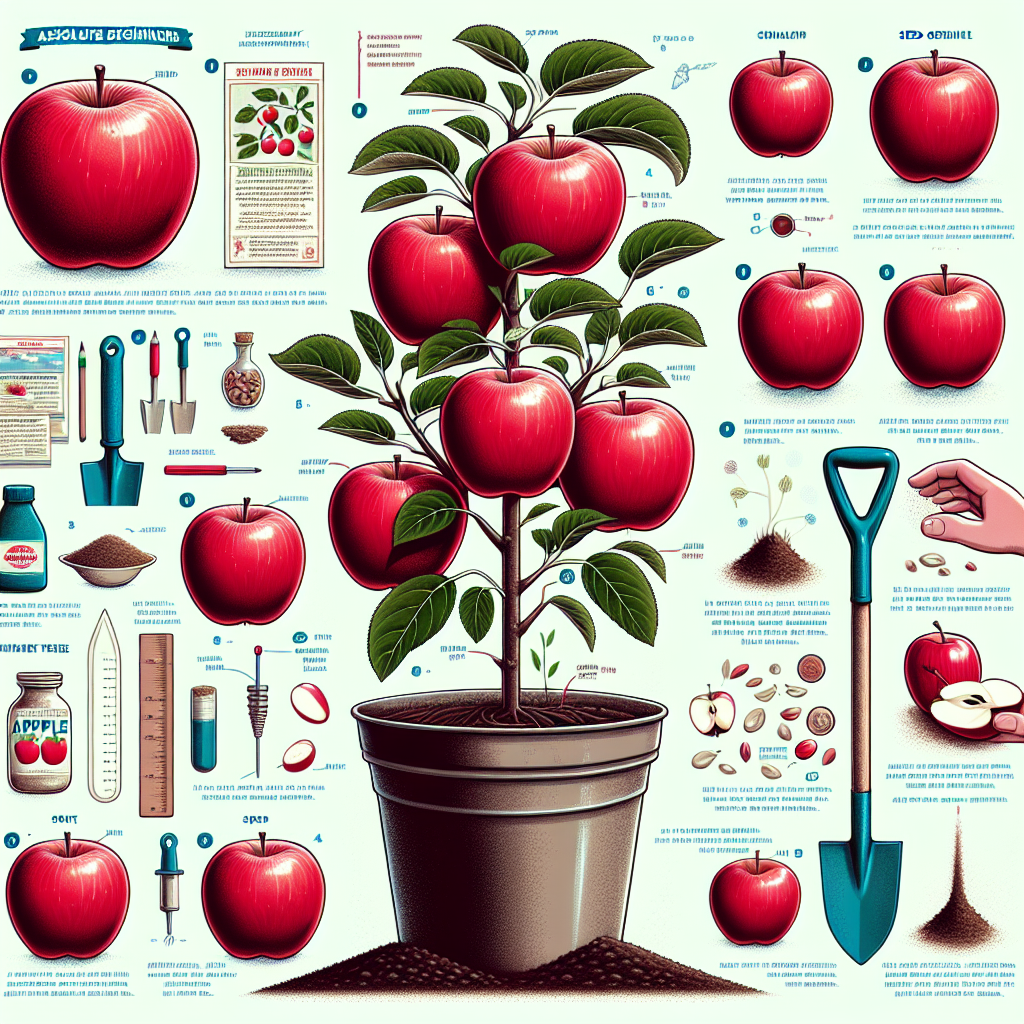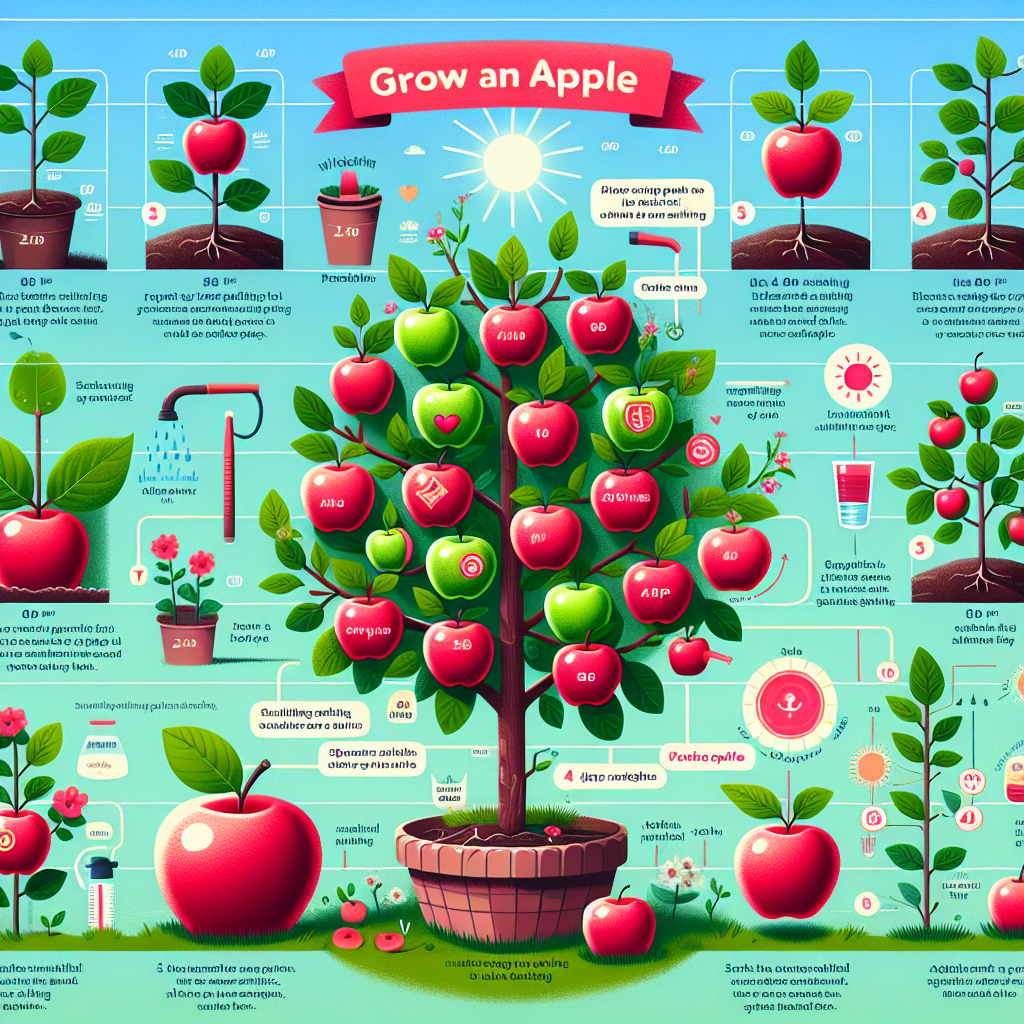Growing Apple Fruit at Home: A Beginner’s Guide
Apples are one of the most popular fruits grown all over the world. Their delicious taste, versatility in various dishes, and numerous health benefits make them a favorite among consumers. If you’ve ever wondered about growing your own apple trees at home, this beginner’s guide will provide you with all the necessary information to get started on your apple-growing journey.
Choose the Right Variety:
The first step in growing apples at home is selecting the right variety for your specific climate and growing conditions. Apples come in a wide range of flavors, textures, colors, and sizes. Some popular varieties include Gala, Granny Smith, Honeycrisp, Fuji, and Red Delicious. Research different varieties and choose ones that are well-suited to your local climate.
Prepare the Soil:
Apple trees require well-draining soil with a pH level between 6.0 and 7.0. Before planting your apple tree, ensure that the soil is fertile and free from any weeds or grasses that may compete with its growth. Adding organic matter such as compost or well-rotted manure will improve soil fertility and drainage.
Planting Apple Trees:
Spring is generally the best time to plant apple trees when the soil has warmed up after winter but before it gets too hot. Select a sunny spot in your garden where there is good air circulation to reduce the chances of diseases. Dig a hole wide enough for your tree’s roots without being too deep. Place the tree in the hole so that its roots are spread out and covered with soil but not buried too deeply.
Pruning and Training:
Proper pruning and training are essential for shaping your apple tree for optimal growth and fruit production. Start by removing any broken or dead branches during late winter or early spring before new growth begins. Train your young apple tree by selecting a central leader (the main vertical stem) and removing any competing branches. Prune annually to shape the tree and remove excess growth.

Watering and Fertilizing:
Apple trees require regular watering, especially during dry periods. Water deeply, ensuring that the soil is moist but not waterlogged. A layer of organic mulch around the base of the tree will help retain soil moisture and regulate temperature. Fertilize your apple trees in early spring with a balanced fertilizer to promote healthy growth and fruit development.
Pest and Disease Management:
Apples can be prone to various pests and diseases such as aphids, codling moths, apple scab, and powdery mildew. Regularly monitor your trees for any signs of infestation or disease. Use organic or chemical-based controls as necessary to manage pests and diseases effectively.
Pollination:
Most apple varieties require cross-pollination from another compatible variety for good fruit set. Be sure to plant at least two different apple varieties nearby or consider growing a self-fertile variety that doesn’t require cross-pollination. Bees play a crucial role in pollinating apple blossoms, so avoid using harmful pesticides that may harm these important pollinators.
Harvesting:
The time to harvest apples varies depending on the variety you’re growing. Apples are usually harvested when they are firm, fully colored, and easily detach from the branch with a slight twist. Taste-test one before harvesting the entire crop to ensure they have reached their desired sweetness level.
Storage:
After harvesting your apples, proper storage is crucial for extending their shelf life. Keep them in a cool place like a cellar or refrigerator where temperatures range between 30-35°F (-1°C – 2°C) with high humidity levels. Place apples in perforated plastic bags or store them in crates lined with newspapers to prevent bruising and rotting.
In conclusion, growing apple fruit at home can be a rewarding experience for beginners. By selecting the right variety, preparing the soil, planting properly, and providing adequate care, you can enjoy delicious homegrown apples in your own backyard. Remember to monitor for pests and diseases, practice proper pruning and training techniques, and harvest and store your apples at the right time for optimal freshness. Happy apple growing!













